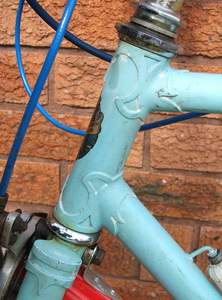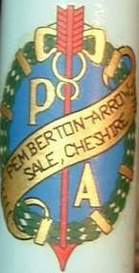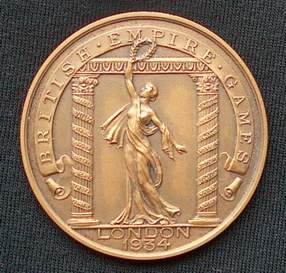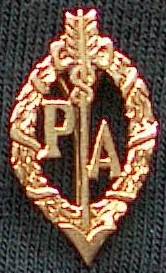Pemberton Arrow
Posted: Wednesday 27th May 2020
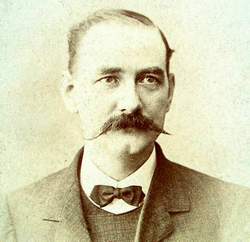
As far back at the nineteenth century Martin Pemberton’s great grandfather was designing and building innovative bicycles which came to be known as the Pemberton Arrow.
The Pemberton family has the distinction of having produced bicycles longer than any other make in the Manchester region. They started in 1896 at 289-291 Ashton Old Road, where Edward Pemberton opened their first shop “Pembertons” and continued until grandson Harold closed the shop in Washway Road, Sale in 1984.
Edward Pemberton (see portrait Right) was born in 1863 and was employed as a loom maker in Coventry and Leicester before moving to Manchester. He worked as a frame builder for the Belsize works in Clayton (very close to Ashton Old Road) before he opened his own shop in 1896, where he continued until 1920. We know little of the early bikes, called “The Pemberton”, but they would probably be of the roadster, safety type with pneumatic tyres. It is likely that sporting versions were made for the local clubmen to race with at the well-known Fallowfield cycle track in Manchester.
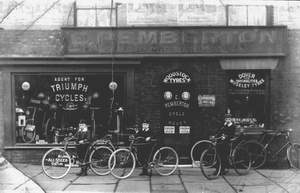
Edward had three sons: Bernard, Albert and Fred.
They were all called up during the First World War; Bernard and Albert going into the Army and Fred being an aircrew observer in the Royal Flying Corps. All three returned when hostilities ceased and Fred worked for a short while at the Royal Ruby works in Altrincham before joining his father in the business. As well as cycles they made radio sets, then a very new invention, which they called “The Pembertone”.
In 1920 they moved to new premises at 875-7 Stockport Road, Longsight (two adjacent shops) where they started to use the name “Pemberton Arrow”. Fred joined the ‘Manchester Wheelers’ cycle club and raced on the track at Fallowfield with the likes of George Owen, Jimmy Taylor and Jack Sibbit. Undoubtedly he encouraged his fellow cyclists also to ride Pemberton Arrows, George Owens and Wilf Higgins certainly did so. In later years Fred became a Starting Judge at Fallowfield along with another well-known Manchester builder called John Berry. (There is a John Berry machine in Readers’ Bikes.)
The shop not only produced sporting cycles, including tandems, for the local clubmen and women but also supplied proprietary makes of cycles and equipment. They became members of the Lightweight Cycle Manufacturers Association and had a stand at the shows in London.
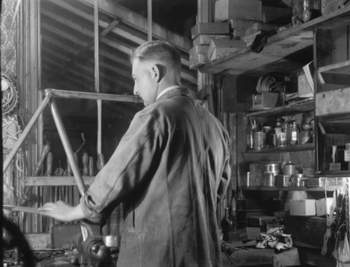
In 1930, Edward Pemberton died and Fred continued the business, building frames with the help of his stepbrother, Frank.
The business was successful and in 1936 they decided to open another shop at 399 Washway Road, Sale. Fred (image of Fred building frame) moved to this shop and was helped in frame-building, before the war, by Charlie Cook and Andy Bent. In this large double-fronted shop they were major cycle dealers in the Sale area for they also sold Raleigh, Sunbeam, BSA, Triumph and Elswick as well as their hand-built machines made to order for local club cyclists. Frank continued to run the Longsight shop and carried it on through the war years until it was closed in the 1940’s.
Being a reservist, Fred was called into the RAF at the start of the Second World War in 1939 and was stationed at Ringway (near to Manchester) for some of the time. The Sale shop continued and by 1942 Fred’s elder son Harold, then 15, helped out after school and on Saturdays before becoming a full-time worker in 1944. Fred returned in 1946 but shortly after this Harold went, as a conscript, to do his National Service for two years. George Lewis came into the shop to help Fred build frames and Harold joined him in 1948 when he returned from National Service. After taking a brazing and welding course at Openshaw Technical College Harold started to do some frame-building – although Fred did the majority of it and took exception to Harold’s theoretical knowledge. Enamelling was done by David Jenkins in Camp Street, Deansgate, and after he died, by Theo Parsons whose shop was only half a mile away in West Timperley.
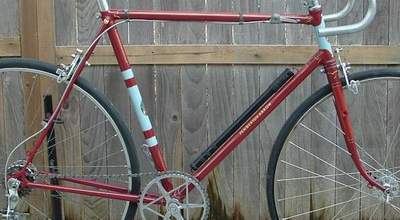
Fred retired in 1962 and went to live in Abergele, North Wales, leaving Harold to continue with the business. Running the shop and building frames eventually became too much work (George Lewis having left) so Harold decided to stop frame-building on the premises and find a builder who would produce frames to the same high standards which were a hallmark of Pemberton Arrows. Neil Shankland at Macclesfield built a sample frame which passed Fred’s scrutiny and so he became the builder of the last twenty-four or so Pemberton Arrow frames produced – although Malc Cowle says that he built the very last one in about 1983.
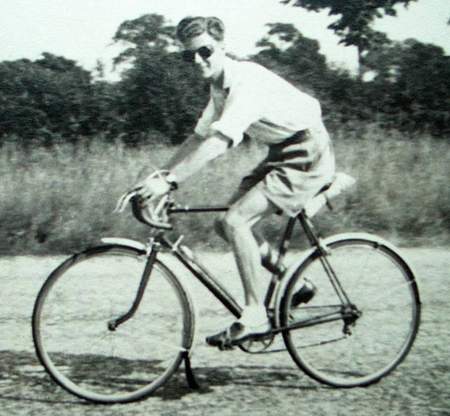
In 1982 Harold had a slight stroke, the cycle trade had diminished, and so he decided to close the business, sell the premises and retire to Abergele close by to his father. Thus, eighty-eight years after starting Pembertons, manufacture of the Pemberton Arrow came to an end. It had been a remarkable achievement to maintain building such high quality machines for such a long period and to continue in the cycle trade through some very difficult times.
It is not easy to know how many machines were made, very few being for stock, as most buyers wanted to have a frame built to their own specification. In the boom years before and just after World War II, fifty a year was probably the maximum, so we can guess that perhaps, in total, three thousand were made. The earliest recorded Pemberton frame that we now know about is frame number 1200 thought to have been built in early 1930, although later frames built by the Pembertons have a six figure frame number indicating the build date. So number 520212, the machine which Harold Pemberton owned, was built in 1952 on February 12th. This is marked under the bottom bracket and behind the fork crown. This numbering system, whilst allowing us to date the machines very accurately, gives us no clue to the quantity being built. The Neil Shankland built frames had a single letter and two-digit number.
Sadly, following a series of further strokes, Harold Pemberton died in October 2003, age 76, leaving his widow Joan. His Pemberton Arrow passed on to his nephew Martin Pemberton (son of Harold’s only brother John) who is also custodian of Fred’s original cycle. This machine however, has the unique serial number 58859, which in fact was Fred’s RAF service number. Martin is intending to restore Fred’s Arrow for his son Max who, born in 1994, is now the youngest Pemberton and direct descendant of (great great grandfather) Edward Pemberton.

Those who remember Fred still talk about his attention to detail and meticulous building methods, which of course affected the price. Never cheap frames, in the late 1940’s and early 1950’s they were selling for £14 14s (over three months wages for a young engineering apprentice of the time). Although some thirteen are known to still exist, most being from the 1940’s and 1950’s period, those remaining are still cherished and show all the hall-marks of quality craftsmanship.
Transport Design International (TDI) is owned and managed by Martin Pemberton, an industrial designer with 25 years experience in the transport industry, so keeping up the tradition of transport design and development business in the Pemberton family.
(Edited by Martin from an article by Ron Sant which first appeared in ‘Northern Wheel’ cycling magazine 2002)
Martin says that there must still be a number of Pemberton Arrows being ridden and cared for which they don’t know about and would be very pleased to hear from anyone with information on the whereabouts of other bikes. Send details to the webmaster.
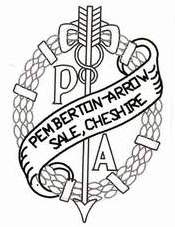

The name of Pemberton has been involved with bicycles in Manchester since 1896.
The history is basically that of a family-run business evolving into the manufacture of specialist lightweight frames and cycles from about 1930. It was from this period that the name of Pemberton Arrow was used. Originally the business was located in the Longsight district of Manchester and in the middle thirties a second shop was opened in Sale on the south side of the city. It was from here that Fred Pemberton, son of Edward who started the business, produced his high quality frames.
Fred had two sons, John and Harold, and it was Harold who took over the business on Fred’s retirement, continuing to make specialist frames. In 1982 Harold had a stroke and closed the business and retired. The shop now sells soft furnishings. Pemberton Arrows were about the most expensive of the ‘Manchester Lightweights’ but the quality and detailed workmanship reflect this.
Harold Pemberton’s own bicycle is now owned by his great nephew Max. There are fourteen known Pemberton Arrows on the register, the oldest being made in 1930, and the last one made in 1982.
Being a native of Sale and being at school with John Pemberton brought about my interest in Pemberton Arrows. I have two in my possession, one built in 1936, the second in 1947 (image above). Both are superb machines to ride.
If anybody out there knows of a Pemberton Arrow please contact me with as much information as possible at barrykathdon(AT)gmail.com
Posted: Wednesday 27th May 2020
This article appears in the following categories.
Upcoming Events
Whether you are looking for a gentle social meet up, or a 100-mile ride browse the community’s upcoming events and plan your next weekend outing.

